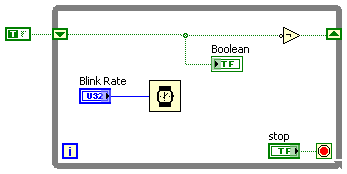What is LabVIEW?
LabVIEW is a system-design platform and development environment for a visual programming language from National Instruments that uses a data flow programming language known as “G”.
Now, if you are like me and had to read the above sentence 2-3 times to discern what on earth is going on (and perhaps had to google one or more of the words), this is the introduction for you. You see, while LabVIEW is often marketed to scientists and engineers (due to its low cost and relatively accessible learning curve), it can also serve as an invaluable tool for the common Maker.
Whether you are using it for personal projects or to give your kid the upper hand at the annual science fair, it hosts such a wealth of applications (specifically in the research and measurement fields), so that even if it’s not your medium of choice, it is good to become at least casually acquainted with.
Let’s get started!
When I first began researching LabVIEW, my expectations (born from a cursory understanding) were basically that I would be able to use the software to interface with hardware, and that because it was offered in a graphical format, it would have much shallower learning curve than straight up linear-style code. I would say that after a good few hours spent with the software and the tutorials, I felt pretty comfortable that this was fairly accurate first impression.
If C and C++ are textbooks, LabVIEW felt like the cliff-notes picture book version. This, in my opinion, was fabulous. Not only is it more appealing to visual learners, but for rapid prototyping I sincerely appreciate not having to take the time to build elaborate menus and such. It literally felt like I was using the basic building blocks of programming, and I felt relatively comfortable with and encouraged by the simplicity of the environment itself.
However as a learner, I struggled somewhat with lack of focus. Coming in without a specific project goal in mind, I was prone to distraction when dredging through some of the tutorials. LabVIEW felt a little intimidating but powerful, and I was very excited to see what can be done once I got my figurative sea legs.
LabVIEW is often billed as an incredibly easy to learn software which, while at first a draw, when I couldn’t figure stuff out made me question everything about myself as an engineer.
Semi-Comprehensive List of Errors that I Made
- Couldn’t figure out that the “slider” labeled “Temperature (C)” in the YouTube tutorial video was actually just a slider named “Temperature (C)” and not an actual stock icon. (-15 minutes of hating myself).
- Couldn’t figure out the order in which to click my objects and run to get my desired result. In other words, it turns out you modify the value in your Front Panel, then click run, and it executes the Block Diagram code. (-10 minutes of self-loathing and irrational concern that I downloaded the entire program incorrectly).
- Case Selector didn’t work because I didn’t link the wire for my Boolean node across to the temperature indicator for the “false” case. (-20 minutes but I felt like this was actually a fairly valid error so I didn’t hate myself as much).
Eventually, after some hard work and personal pep talks I was able to get a simple blink program to run!



